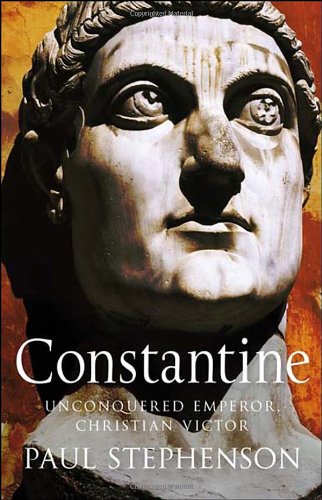Constantine:
Unconquered Emperor,
Christian Victor

Paul
Stephenson is a Reader in the Department of History at the University of Durham
** PART I - The general background - chapters 1-4
** PART II -
** PART III - Constantine as emperor - chapters 9-12
The book
ends with a conclusion, a glossary, a brief note on primary sources, a long bibliographical
essay and an index.
What about
illustrations? In the beginning of the book there are eight maps and two family
trees (stemmata). In addition, there are 60 photos, most of them in colour. The
photos are printed on special paper in three separate blocks. Most of the
photos come from an agency, but 24 are taken by the author himself. The size is
rather small, with two or three photos per page.
In his
preface Stephenson says he hopes information given in the book “will prove
useful to those who wish to follow in the emperor’s footsteps, from York Trier Arles Rome Thessaloniki Istanbul
When we
look at the illustrations, we can see he has followed his own advice. There are
photos taken by the author in Trier , Arles Rome Thessaloniki
Stephenson’s
account is supported by a wide range of sources, not only ancient texts but
also archaeological objects, sometimes coins with pictures and inscriptions,
sometimes monuments with pictures and inscriptions.
Each
illustration is mentioned in the text, giving extra weight to his argument, and
in several cases the object in the photo is analysed in great detail:
* The charming porphyry statue of the tetrarchs, now in
* The arch of Galerius in
* The arch of
* The great cameo, is discussed on pages 217-219 (figure 53)
* The
When it
comes to sources, the author is very methodical. He evaluates them in order to determine
if we can believe them. He explains what we can believe and why. In short: he
does exactly what a historian is supposed to do, and he does it very well.
This book
is written by an expert, but even an expert can make mistakes. Let me explain:
(a) On page
16 he mentions the technical term “honourable discharge.” The Latin term is
given as honesta misso. But the correct form is honesta missio.
(b) On page
75 he says the Ludovisi Sarcophagus is “on view in the Museo Nazionale delle
Terme in Rome 11, a picture of the sarcophagus taken by
the author himself. The caption makes the same mistake about the location.
(c) On page
124 he places the Flavian period “shortly after AD 100.” It should be shortly before AD 100.
(d) On page
204 he mentions “a ruling of the senate … in 39 BC.” The next sentence begins
with these words: “Eighty years later, the emperor Hadrian confirmed …” Hadrian’s
confirmation was given in AD 119/120. From 39 BC to AD 119 there are 158 years.
I have a
few additional remarks about the book:
(1) Where
was Constantine Serbia
(2) When
was Constantine Constantine Constantine
(3) On page
260 he mentions Autun. The name appears again on page 294. This is the modern
name of the place. The ancient name – Augustodunum – is not given. Moreover,
Autun is not listed in the index.
There are
several biographies in English on Constantine the Great, some of them older,
from the 19th or the 20th century, some of them more
recent, from this century. I have not read all of them, but I am quite sure this book
must one of the best.
Stephenson covers
the major problems connected with the emperor and his reign and he does it very
well.
We meet Constantine Rome Constantinople (chapter 8). The role of
Christianity is also covered, not only Constantine
Stephenson’s
conclusions are not based on speculation, but rest on ancient sources. In
addition, the text is well written and supported by some useful illustrations. In
spite of the mistakes and the minor flaws mentioned above, this book is highly
recommended.
No comments:
Post a Comment